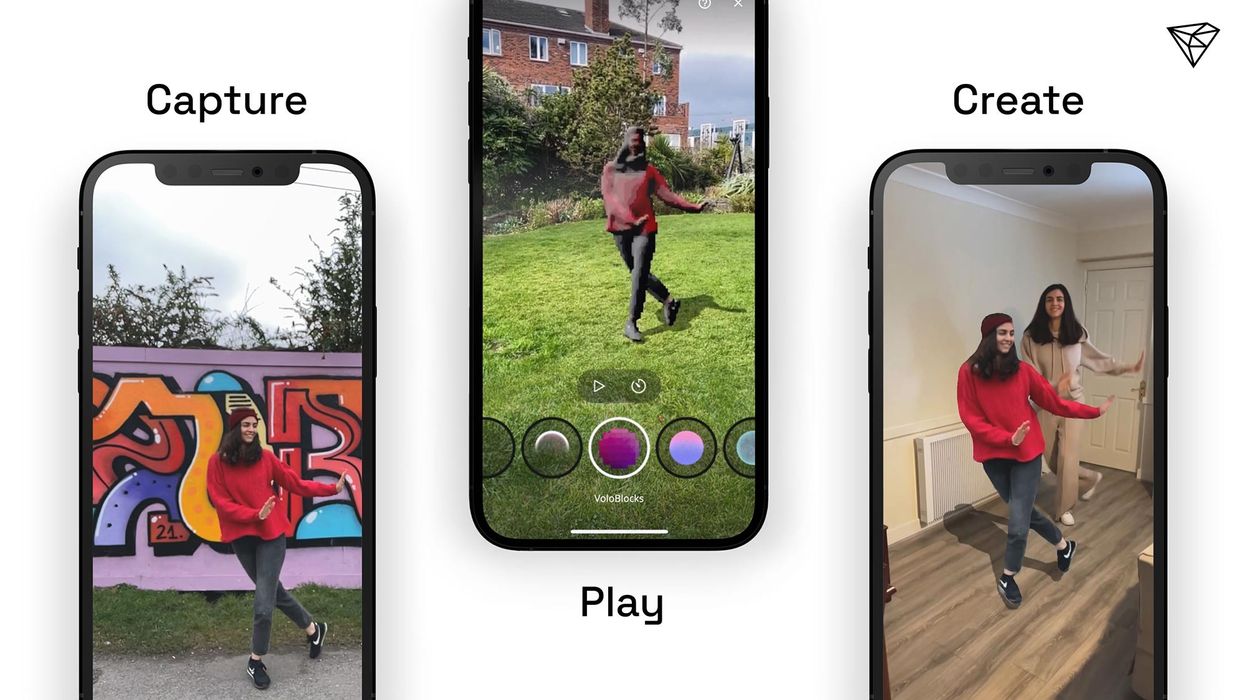Easily Transform a Video of a Person Into a 3D Model With New AI-Powered Hologram App
Another day, another new piece of AI news to excite and terrify you all — you’re welcome!

Coming to us from the team at Volograms, we have a creative tool that aims to power 3D user-generated content in the form of a new AI-powered messaging system that can turn a photo or video into a professional quality 3D hologram.
Pretty exciting, right?
With a focus on human subjects (aka people), this new Vologram Messages system uses the many ungodly powers of generative AI to hone in on getting the shape and appearance of real people in 3D in the most accessible and affordable way and for use in any web browser or smart device—which you can try out today for free!
Let’s look a bit deeper into this new Vologram Messages system and see what’s really going on here.

Vologram Messages
Coming from an AI company focused on 3D holograms, messaging might seem to be an odd product to focus on. However, with the goal of capturing people in 3D with just your smartphone and from a single viewpoint, the ambition behind this tool should be enough to inspire this use plus potentially many others in the future.
“From the moment Volograms was founded, our goal was fairly simple: we wanted to create a way to make volumetric holograms accessible to anyone and everyone. With the introduction of Vologram Messages, we can now offer businesses and organizations a way to simplify the 3D hologram creation process and make it accessible to everyone. For a business looking to announce, promote, sell or even just engage with their own teams, this is an easy and affordable way to stand out.” — Rafa Pagés, Volograms’ CEO.
With Volograms AI technology, users can create photorealistic 3D humans to help out with all types of communications, marketing endeavors, sales pitches, and more from a business standpoint, as well as potentially creep into film and video production as a way to develop greater visual effects, run virtual productions, or be a part of immersive AR experiences.
Generative AI and 3D Holograms
Since 2021, parts of this technology have been available to the public with Volograms’ Volu, their first personal 3D hologram creation tool designed for smartphones and mobile devices. With a single five-second video this tech has been able to convert video into a 3D hologram which could be shared within this app. With Vologram Messages, this tech is set to be taken much further as an offering for marketers, companies, and other business professionals.
What’s impressive about this technology though might simply be that it's simply way easier than traditional 3D scanning or modeling tools which require multiple cameras or depth sensors working in unison to create a 3D video. With Volograms’ proprietary single-camera technology and their advanced AI algorithms, their tool can take any normal video recording of a person and extrapolate the subject into a 3D volumetric hologram—which you can then rotate, move, or view from any angle.
This means, with the help of generative AI, you can turn your buddy (or your main character in your live-action or animated film) into a fully-realized 3D hologram with a quick video without even needing to ask your subject to spin around, wear any motion capture suits, clothes, or anything else out of the ordinary.

The Future of Video
Now, what does this mean for the future of film and video though? As we explored new AI-powered innovations like virtual production aids and 3D modeling tools, these new technologies are coming out so quickly and with so much innovation and power behind them that it’s truly getting hard for the industry to keep up.
However, while many of the primary uses of this technology are business-facing today, it’s undeniable that once this tech gets into the hands of various filmmakers, content creators, animators, and the like, the possibilities of using the generative AI parts of this hologram technology could indeed become endless.
It also raises some ethical questions as to just how much (or in this case, how little) of your footage and likeness might be available for others to record, hologram-ise, and use in projects of their own. Could you be the star of your own AI-produced short film just by recording a video of yourself for TikTok?
All interesting questions were raised by this exciting new technology and tool. How do you feel about this news though? Any interested in getting started with it today? Let us know your thoughts in the comments below.











